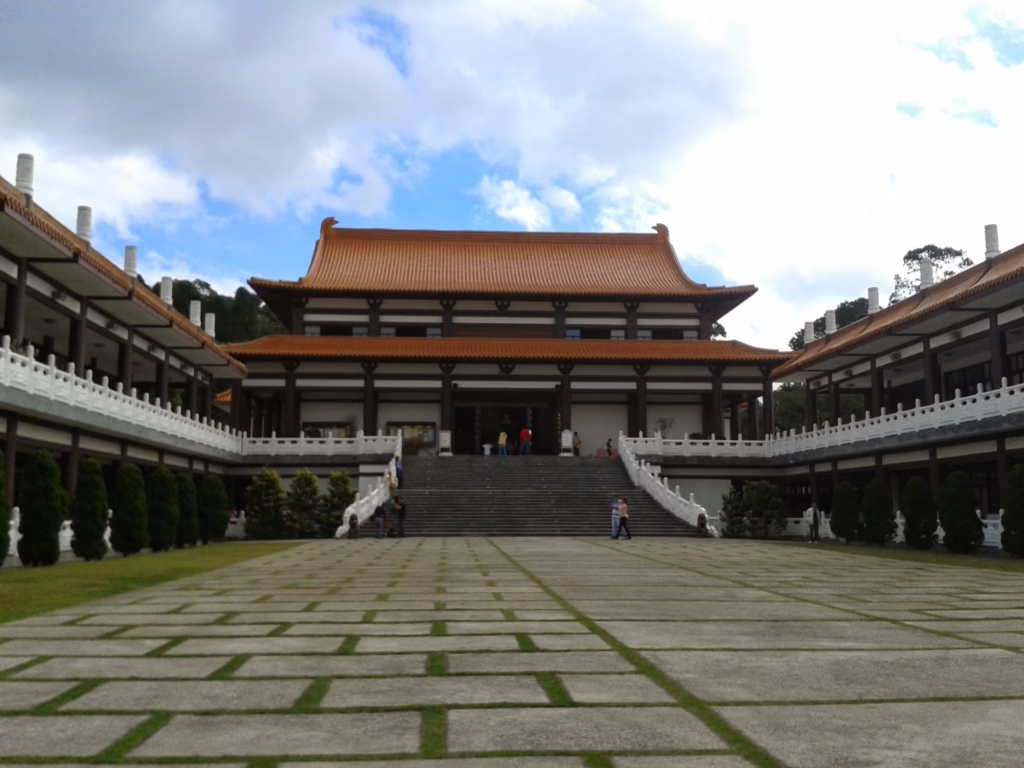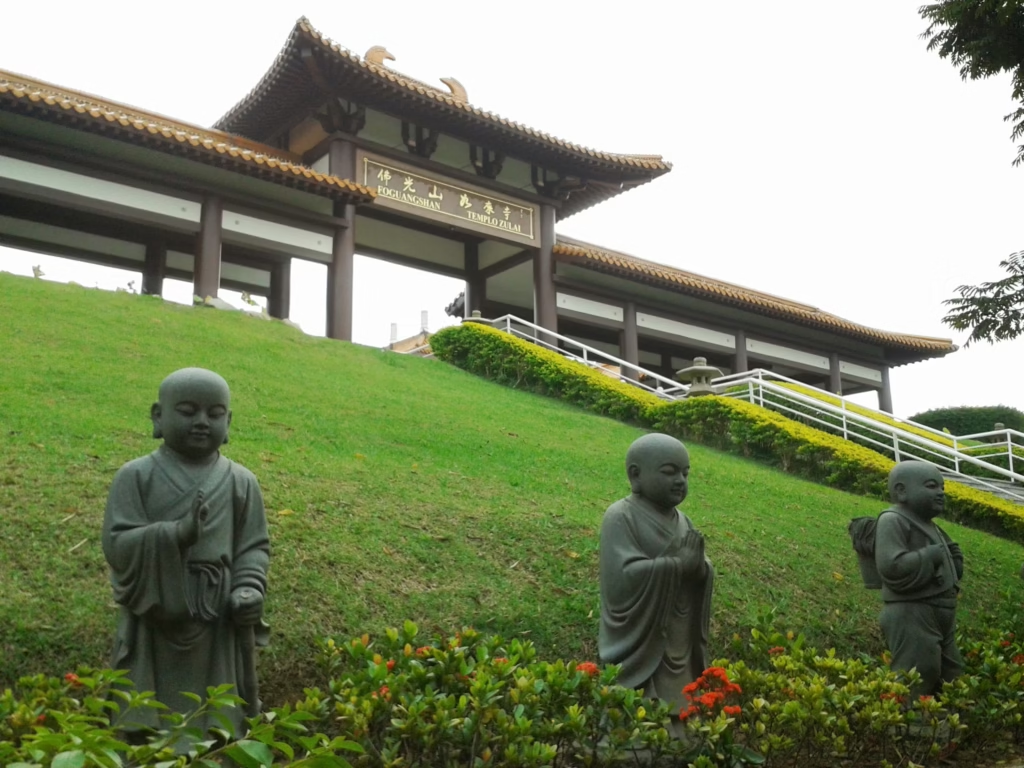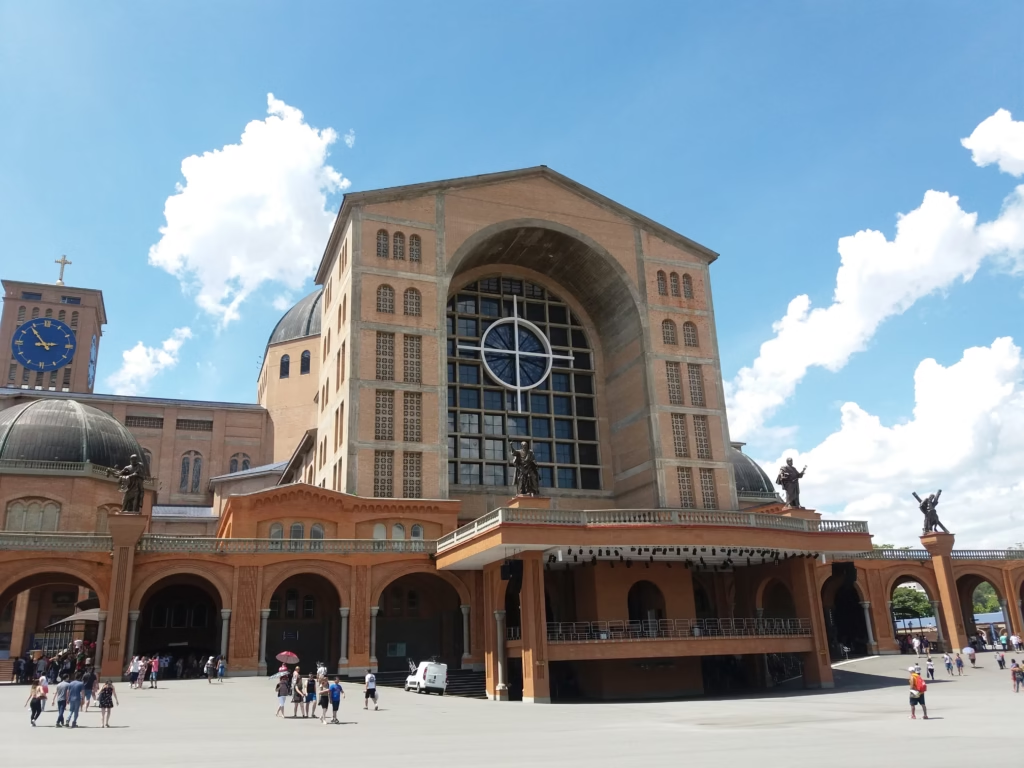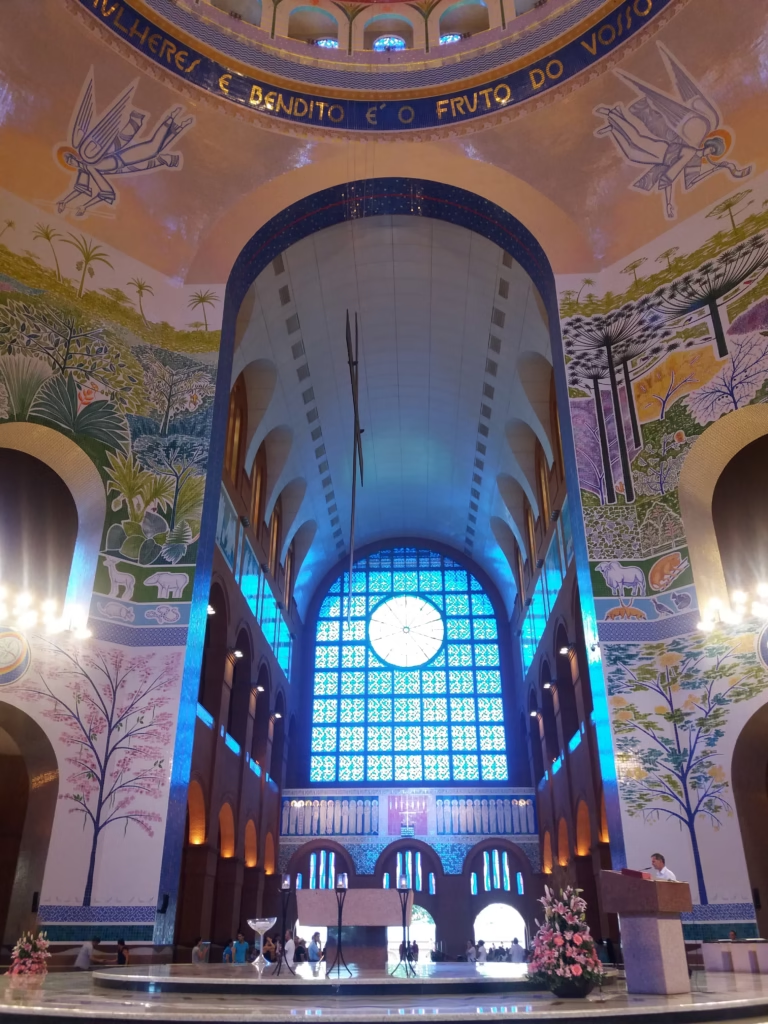São Paulo, Brazil’s bustling financial and cultural capital, is often associated with its skyscrapers, vibrant nightlife, and world-class cuisine. But hidden among the city’s fast-paced modernity are tranquil, sacred spaces—temples, churches, and spiritual centers—that reflect the city’s rich tapestry of faiths and cultures, making it an ideal destination for a religious tour.
A Land of Many Faiths
Brazil is one of the most religiously diverse countries in the world—not only because of the variety of faiths practiced, but also due to the rich syncretism that blends elements of different spiritual traditions into something uniquely Brazilian.
Shaped by centuries of cultural exchange among Indigenous peoples, European colonizers, African slaves, and later Middle Eastern and Asian immigrants, Brazil’s spiritual landscape is a vibrant tapestry. In this cultural mosaic, Catholicism coexists with Afro-Brazilian religions like Candomblé, Evangelical Christianity flourishes, and communities of Buddhists, Muslims, Jews, and Spiritists thrive side by side.
In no place is this diversity more evident than in São Paulo, Brazil’s most populous and cosmopolitan city. With sacred spaces from nearly every major world religion, the city is an ideal destination for a religious tour that combines faith, history, architecture, and cultural depth.
Whether you’re looking for reflection, discovery, or simply an inspiring way to explore the city, São Paulo’s religious landmarks offer a meaningful journey through the spiritual heart of Brazil.
1. Sé Cathedral (Catedral da Sé) – The Heart of the City
Located in Praça da Sé, the neo-Gothic Catedral Metropolitana de São Paulo is one of the largest churches in Brazil. Completed in 1954, the cathedral is a masterpiece of stained glass, towering columns, and intricate details. Beneath it lies a crypt that houses the tombs of important historical figures, including indigenous leader Tibiriçá.
Check out our article here, on São Paulo’s History and Culture, including the iconic Sé Cathedral and other must-see spots around the city.
Tip: Take a guided tour to learn about the cathedral’s architecture and history.
2. Mosteiro de São Bento – A Peaceful Retreat in the City Center
This Benedictine monastery, founded in 1598, is known for its serene atmosphere, beautiful baroque interior, and Gregorian chants during Mass. The Monastery of São Bento is also famous for its bakery, where monks prepare delicious breads and cakes.
Don’t miss: The Sunday Mass with live Gregorian chant—an unforgettable experience.
3. Templo de Salomão – The Largest Evangelical Church in Latin America
A modern architectural marvel, the Temple of Solomon, built by the Universal Church of the Kingdom of God, is a replica of the biblical temple in Jerusalem. It can hold up to 10,000 people and offers guided tours that explain its symbolism and construction.
Highlight: The “Biblical Garden” and historical exhibits provide deep insights into biblical traditions.
4. Templo Zu Lai – A Taste of the East in the São Paulo Metro Area
Just outside São Paulo, in Cotia, you’ll find Templo Zu Lai, the largest Buddhist temple in South America. Surrounded by tranquil gardens and traditional Chinese architecture, it’s a place for reflection and spiritual discovery. The temple also hosts meditation sessions and cultural festivals.
Best time to visit: During the Lunar New Year or Vesak (Buddha’s Birthday) celebrations.


5. Igreja Nossa Senhora do Brasil – A Jewel of Brazilian Baroque
This charming church in the upscale Jardim Europa neighborhood is beloved for weddings and religious ceremonies. With its opulent interior and colorful tiled façade, the Church of Our Lady of Brazil is a fine example of Brazilian colonial-style baroque, with a twist of modern elegance.
6. Mesquita Brasil – The First Mosque in Brazil
Located in the Cambuci neighborhood, Mesquita Brasil was inaugurated in 1960 and remains a center for the Muslim community in São Paulo. The mosque welcomes visitors and offers guided tours to promote interfaith understanding.
Visitors welcome: Dress modestly and contact in advance for a guided visit.
7. Sinagoga Beth-El – A Symbol of the Jewish Presence in São Paulo
A few blocks from Paulista Avenue, Beth-El Synagogue stands out not only for its unique architecture—resembling a seven-sided star—but also for its historical and cultural significance. Built in the 1930s by Jewish immigrants from Eastern Europe, it now hosts both religious services and cultural activities, including the Jewish Memory and Heritage Center (Centro de Memória Judaica).
Inside, visitors can learn about the Jewish diaspora in Brazil, explore exhibits on Jewish traditions, and appreciate the synagogue’s beautiful stained glass windows and dome.
Tip: Check their calendar for public lectures, cultural events, and guided tours in English or Portuguese.
8. Basílica de Nossa Senhora Aparecida – The Heart of the Catholic Faith in Brazil
Although located about 170 kilometers from São Paulo city, in the town of Aparecida, the Basilica of the National Shrine of Our Lady of Aparecida is a must-visit for anyone interested in Brazil’s deep Catholic roots. It is the second-largest Catholic church in the world—second only to St. Peter’s Basilica in the Vatican.
Dedicated to Our Lady of Aparecida, the patron saint of Brazil, the basilica attracts millions of pilgrims each year, especially on October 12th, the national holiday in her honor. The complex includes a vast sanctuary, museums, a cable car, and the historic Porto Itaguaçu, where the statue of the saint was reportedly found in the Paraíba River in 1717.
How to get there: A day trip by car or tour bus from São Paulo is easy and highly recommended for spiritual travelers and architecture enthusiasts alike.



